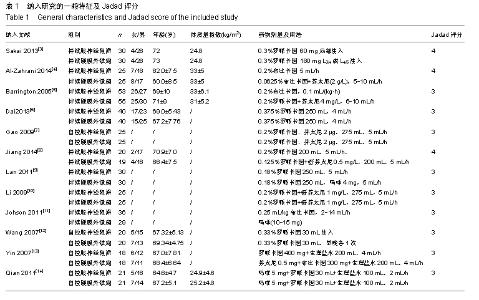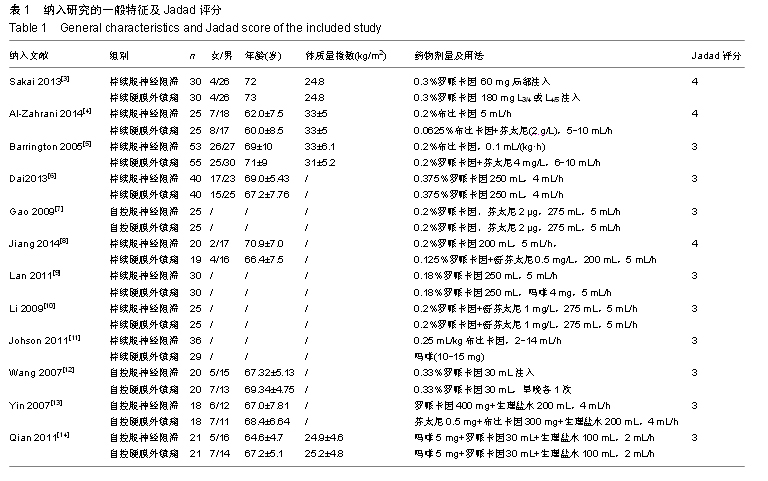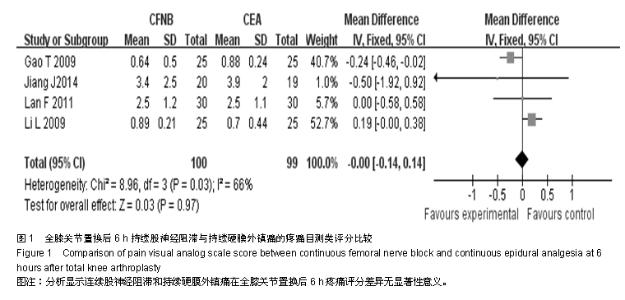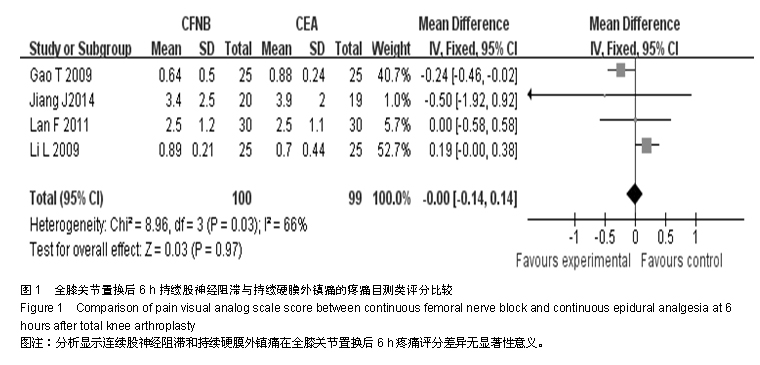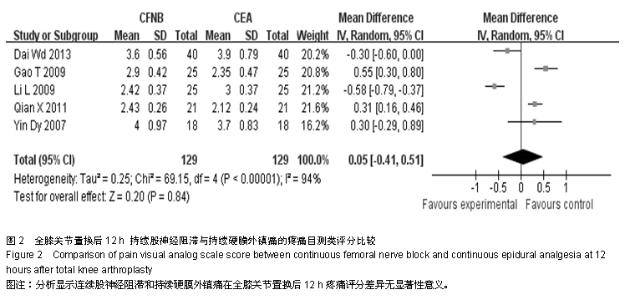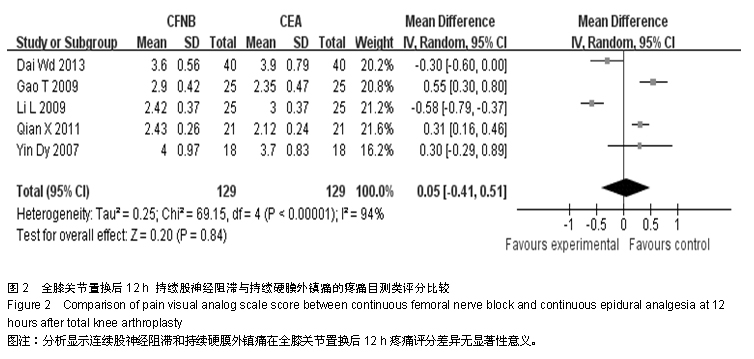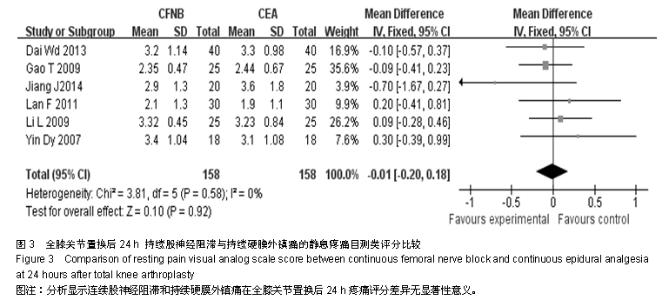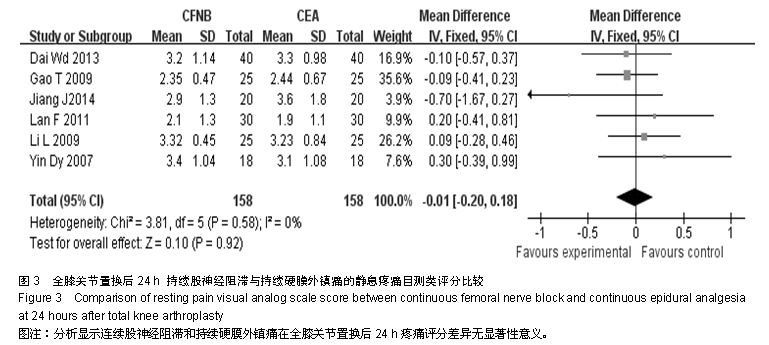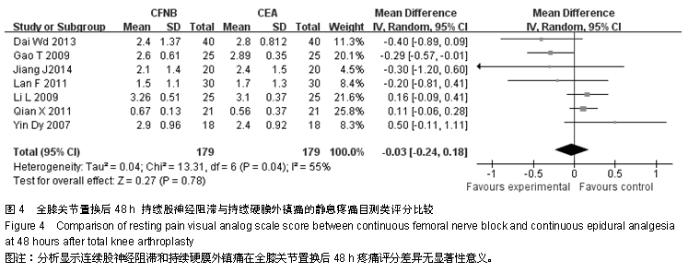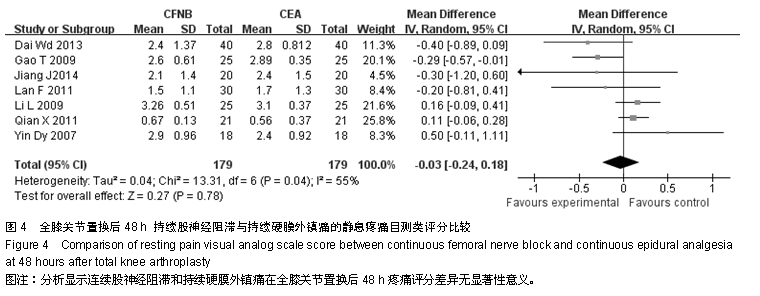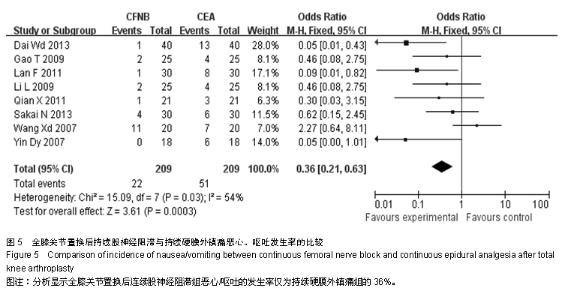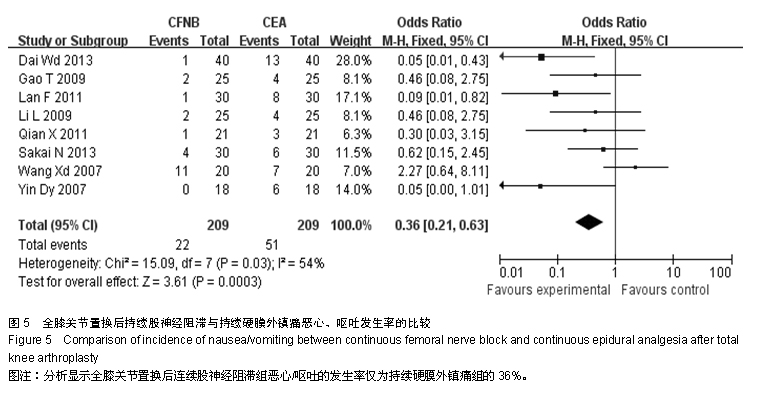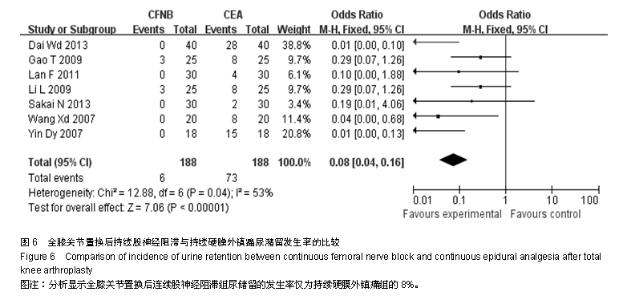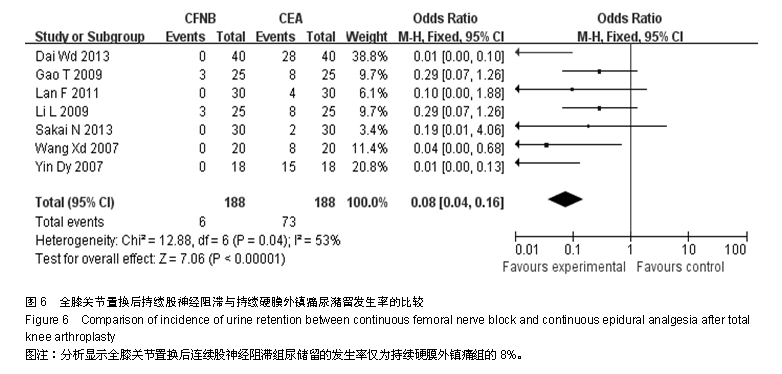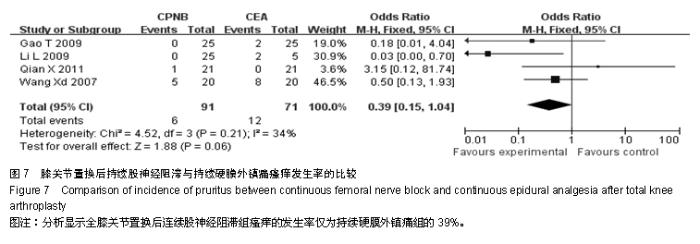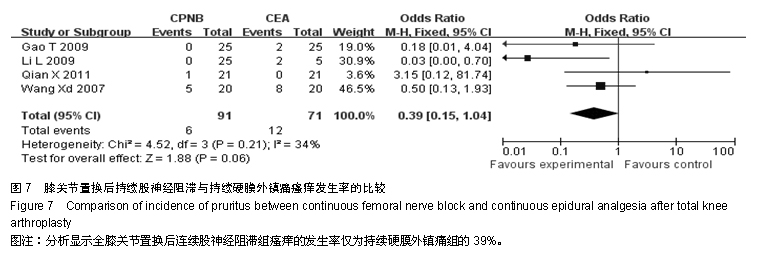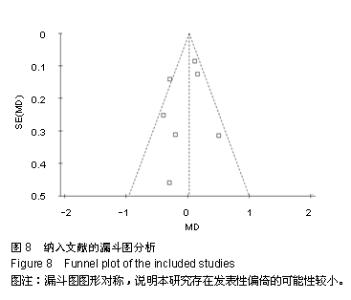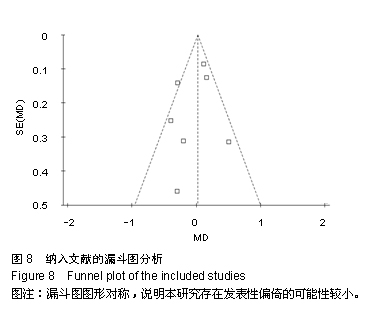| [1] Sundarathiti P, Ruananukul N, Channum T, et al. A comparison of continuous femoral nerve block (CFNB) and continuous epidural infusion (CEI) in postoperative analgesia and knee rehabilitation after total knee arthroplasty (TKA). J Med Assoc Thai. 2009;92(3): 328-334.
[2] Shanthanna H, Huilgol M, Manivackam VK, et al. Comparative study of ultrasound-guided continuous femoral nerve blockade with continuous epidural analgesia for pain relief following total knee replacement. Indian J Anaesth. 2012;56(3): 270-275.
[3] Sakai N, Inoue T, Kunugiza Y, et al. Continuous femoral versus epidural block for attainment of 120 degrees knee flexion after total knee arthroplasty: a randomized controlled trial. J Arthroplasty. 2013;28(5): 807-814.
[4] Al-Zahrani T, Doais KS, Aljassir F, et al. Randomized clinical trial of continuous femoral nerve block combined with sciatic nerve block versus epidural analgesia for unilateral total knee arthroplasty. J Arthroplasty. 2015;30(1): 149-154.
[5] Barrington MJ, Olive D, Low K, et al. Continuous femoral nerve blockade or epidural analgesia after total knee replacement: a prospective randomized controlled trial. Anesth Analg. 2005;101(6): 1824-1829.
[6] 戴文达,殷殿毅,李渊,等.连续股神经阻滞联合帕瑞昔布用于全膝置换术后镇痛的效果评价[J].中国骨与关节外科,2013,6(1): 17-20.
[7] 高涛,耿立成.股神经和硬膜外自控镇痛在全膝关节置换术后的效果比较[J].中国中西医结合外科杂志,2009,15(6):590-593.
[8] 蒋嘉,温洪,周权,等.不同镇痛方法对膝关节置换术术后疼痛和功能恢复的影响[J].临床麻醉学杂志,2014,30(5):437-440.
[9] 兰飞,王天龙,马艳辉. 连续外周股神经阻滞用于老年肥胖患者全膝关节置换术后镇痛与功能康复的评价[J].中国现代医学杂志, 2011,21(17):2016-2020.
[10] 李丽,罗曼,冯洁,等.连续股神经阻滞镇痛对老年人全膝关节置换术后康复功能的影响[J].中国矫形外科杂志, 2009,17(15): 1139-1141.
[11] Johnson CB, Steele-Moses SK. The use of continuous femoral nerve blocks versus extended release epidural morphine: a study comparing outcomes in total knee arthroplasty procedures. Orthop Nurs. 2011;30(1): 44-53.
[12] 王晓东,虎松艳,林惠华.连续股神经阻滞对全膝关节置换术后镇痛及早期康复的影响[J].热带医学杂志,2007,7(8): 775-777, 759.
[13] 殷殿毅.全膝置换术后连续性股神经阻滞镇痛和连续性硬膜外镇痛的效果比较[D].复旦大学,2008.
[14] 钱霄,瞿玉兴,蒋涛,等.股神经和硬膜外自控镇痛在全膝关节置换后的作用[J].中国组织工程研究与临床康复,2011,15(17): 3053- 3056.
[15] Lorenzini C, Moreira LB, Ferreira MB. Efficacy of ropivacaine compared with ropivacaine plus sufentanil for postoperative analgesia after major knee surgery. Anaesthesia. 2002;57(5): 424-428.
[16] Zaric D, Boysen K, Christiansen C, et al. A comparison of epidural analgesia with combined continuous femoral-sciatic nerve blocks after total knee replacement. Anesth Analg. 2006;102(4):1240-1246.
|
